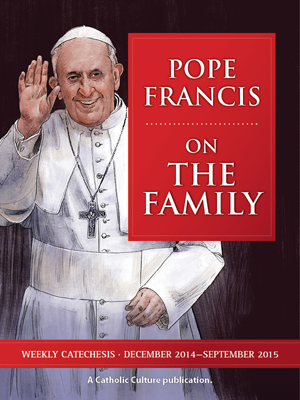Pope’s choice of new US cardinals underlines commitment to ‘irreversible’ change
By Phil Lawler ( bio - articles - email ) | Oct 10, 2016
With his selection of 17 new cardinals, Pope Francis has left no doubt about his determination to bring permanent change to the Church. “You have to realize that he is aiming at reform that is irreversible,” one of his closest advisers said last year. With his additions to the group that will choose his successor, the Holy Father has increased the odds that the next Pope will continue what he has begun.
Pope Francis made good his commitment to the “peripheries” by choosing six new cardinals from missionary territories. Yet while he was giving new voices to small and impoverished societies, the Pope also gave the United States new importance within the College of Cardinals.
In fact, the Pope’s decision to give red hats to three American archbishops says as much about his overall plan as his choice of prelates from the peripheries:
- Archbishop Kevin Farrell, until recently the Bishop of Dallas, is now the prefect of the newly formed Dicastery for Laity, the Family, and Life. In the past, this new status would be reason enough to explain his selection. But this year, no other officer of the Roman Curia was on the Pope’s list. The choice of Archbishop Farrell, then, seems to underline the importance that the Pope attaches to the new Vatican offices he has created—and, quite likely, to signal that this dicastery will eventually be given the status of a Vatican congregation.
- Archbishop Blase Cupich of Chicago has been clearly marked as a papal favorite, as well as an emerging leader of the liberal wing of the American episcopate. The Pope reportedly chose him personally for the Chicago assignment, turning down the list of candidates that had been presented to him. He then added him to the influential Congregation for Bishops, giving him a say in the selection of candidates for episcopal rank, especially in the US. His influence is now redoubled, and expanded to include a vote in the next papal election.
- Archbishop Joseph Tobin on Indianapolis, another American bishop with strong liberal credentials, is known primarily for throttling down a Vatican investigation of the Leadership Conference of Women Religious, during his tenure as Secretary of the Congregation for Religious. While he was anxious to make peace with radical nuns, he was willing to clash publically with Indiana’s Governor Mike Pence on the acceptance of Syrian refugees.
Conspicuously missing from the Pope’s list was Archbishop Charles Chaput of Philadelphia, whose uncompromising public stands on issues involving marriage, life, and human sexuality apparently cause discomfort in the current Vatican climate. So Pope Francis missed the opportunity to add the first-ever Native American to the College of Cardinals. Perhaps even more surprising is the omission of Archbishop José Gomez of Los Angeles, the most prominent representative of Hispanic Catholicism in America and the head of the country’s largest archdiocese. (In fact the Catholic flock in Los Angeles is roughly seventeen times as large as the comparatively puny population of 250,000 Catholics in Archbishop Tobin’s Indianapolis see.) There will be no first-ever Latino cardinal in the US, either.
That Pope Francis chose these three American prelates is revealing. But it is truly remarkable that he chose any three from the US. The American Church is already heavily represented in the College of Cardinals, with 15 of the 211 living members. No other country but Italy can boast as many cardinals. After the November conclave there will be 18 Americans in the College, of whom 10 will be eligible to vote in a papal conclave. Again, no other country but Italy rivals the strength of the American voting bloc.
Pope Francis has vowed to limit the power of the Roman Curia. Yet of the three US prelates who will receive red hats, one (Farrell) will now be serving in the Curia and another (Tobin) has extensive experience there. He has expressed his determination to internationalize the College of Cardinals, to expand the influence of the developing world. He has made strides in that direction with his appointment of cardinals from Bangladesh, Mauritus, Papua New Guinea, and the Central African Republic. Yet at the same time he has increased the influence of the US, the world’s greatest secular power.
Given his obvious reservations about the influence that America has in the world today, it seems highly unlikely that Pope Francis intended to give the US a greater say in the affairs of the Catholic Church. So it seems more likely that he chose these particular prelates—particularly Archbishops Cupich and Tobin—not because they are Americans but because they will support the “irreversible” changes he plans.
All comments are moderated. To lighten our editing burden, only current donors are allowed to Sound Off. If you are a current donor, log in to see the comment form; otherwise please support our work, and Sound Off!








